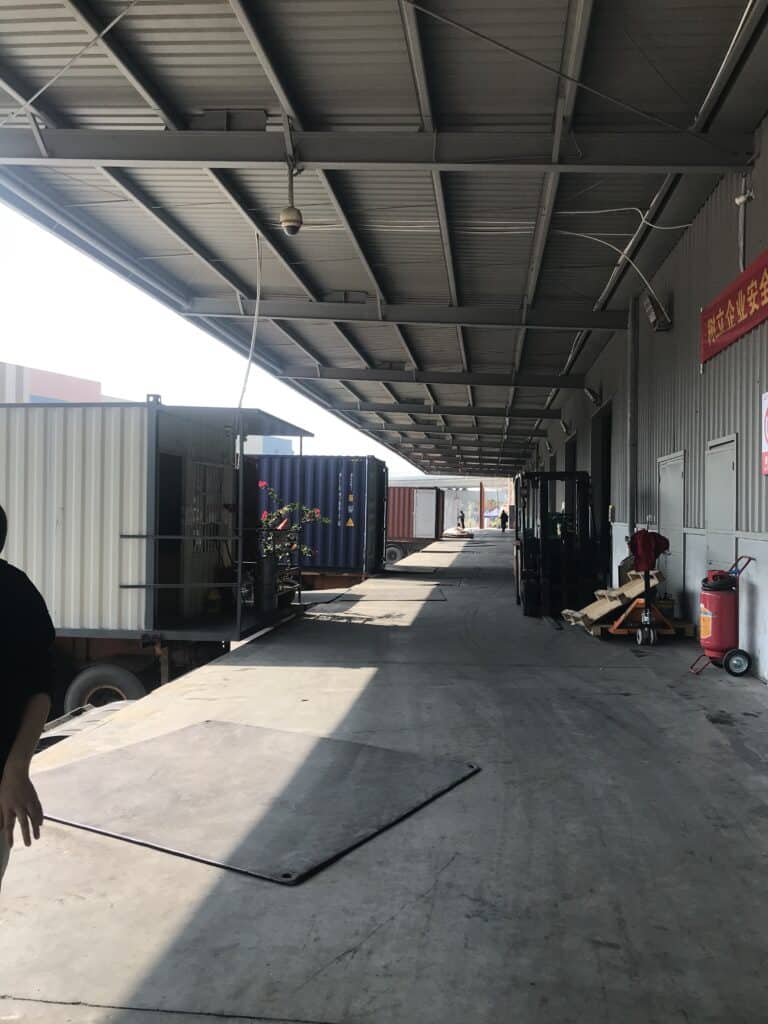As the world makes conscious efforts to reduce environmental hazards courtesy of unfriendly environmental manufacturing practices; the consumer demand for recyclable paper packaging products has also risen.
Importing recyclable paper packaging products to resell is not as difficult as many people make it seem. The key to the success of such a business is knowing the right path to follow.
In this article, you will learn how to successfully import recyclable paper packaging products from China and how/where to find legitimate suppliers to avoid getting scammed. You will also learn how to finalise your orders and get the best deals from your preferred supplier.
So, without any further ado, let’s dive right into it.

Why you should import recyclable paper packaging products from China
China is generally considered a good business place not only because of its large population but also because of its permissive business etiquette and strong business ecosystem. Its relatively low tax duties and competitive currency practices make China a very attractive option for potential business owners and buyers.
However, there are several other reasons you should import your recyclable paper packaging products. Some of them include;
- Mature supply chain in all industries
- Earth-friendly policies
- Adoption of eco-friendly production processes by manufacturers
- Mature supply chain in all industries:
According to Remedi, supply chain maturity refers to the resilience of a supply chain. It refers to the stability of the connection between manufacturers, distributors and consumers. Supply chain maturity is indeed a very important factor to consider as a weakness in the supply chain could ultimately cripple production.
China is often regarded as home to the most networked suppliers, manufacturers and distributors. The country is such a very efficient and cost-effective place to manufacture products. Raw materials are within reach of the manufacturers and are sold at some of the cheapest rates around the world.
- Earth-friendly policies:
China has since taken a stance against the use of plastics considering its detrimental effect on the ecosystem. The government of China has continued to enforce strict environmental guidelines as far back as 2013 in a bid to wage war against pollution.
Its stringent measures towards more sustainable practices has forced manufacturers to adopt eco-friendly choices and manufacturing processes.
Many companies that manufacture plastics and run their machines on coal emissions have been forced to make use of natural gas instead. Whereas, companies that have refused to adopt these sustainable practices and strictly adhere to government policies are forced to shut down or relocate their businesses.
These strict earth-friendly policies enforced by the Chinese government has made China the biggest exporter of eco-friendly products. Having a large market of suppliers in this niche means there is more competition for businesses and this translates to cheaper prices.
- Adoption of eco-friendly production processes by manufacturers:
Materials such as plastics are being substituted for greener choices like recyclable packaging products. It takes hundreds of years for plastics to decompose because it is not a material that easily disintegrates neither does its production process do the environment any good.
Meanwhile, sustainable choices like paper packaging products can decompose along with kitchen waste and get recycled easily.
The adoption of eco-friendly production processes and materials has made China the largest supplier of eco-friendly products and arguably the best source for such products in the world.

Since July 2019 in Shanghai, the use of disposable cups has been prohibited by the government and replaced with products made from recycled materials such as paper. Beijing has also prohibited restaurants and hotels from offering free disposable goods since May 1.
Where is the best place to get connected with Chinese suppliers?
Being the World’s largest market hub, China has an abundance of suppliers. The real problems arise when it comes to finding one that you can trust to give you quality services.
There are several scams out there and the last thing you want is to fall prey to these scammers who will rip you off your money. According to a survey carried out by Global Study, business owners admitted that their greatest problem was verifying the legitimacy of Chinese suppliers.
Moving on, the language barrier might also constitute a problem but that’s why you have places like Google, Alibaba, Exhibitions amongst many others.
This is why you need an in-depth knowledge of where to look when sourcing for Chinese suppliers. The following are a few places you are guaranteed to find reliable suppliers:
- Google
- Alibaba
- Exhibitions
- Made-in-China
It’s no news that Google is the most used search engine in the world and will give you the information you need at your fingertips. By simply typing in a search query about Chinese suppliers, you get several pages of answers to your question.
You are also able to get leads to sites where you can easily find a directory of these suppliers. Google would surely promote ADs in the search result. However, they make it very easy for users to distinguish Ads from the organic results.
- Alibaba
Alibaba is the global leading platform for wholesale trade, it also has a directory for manufacturers, suppliers and distributors. It has a reputation of holding the world’s largest directory of suppliers with an estimate of 8.5 million sellers. It is the hub for any kind of item that you might be looking for.
Most suppliers usually have a minimum order quantity which means your order cannot go below a specified quantity. Alibaba is easy to use as you can search for a keyword in your niche and find a list of suppliers available in that niche.
As a verified buyer, you have access to a more detailed and elaborate list of suppliers in China. You will be able to view their trade records, background information and other relevant data such as customer reviews. With Alibaba, you have more assurance and security while sourcing for suppliers.
Google is a bit better than Alibaba because, on Google, search results are organic unlike Alibaba where traders are usually promoted based on how much they pay. So, you are not very likely to get the best results on Alibaba like you would on Google.
- Exhibitions
Exhibitions are not rare events in China. A common one is the Canton Fair which was introduced in 1957, this Chinese Import and Export Fair is a trade expo designed to connect Chinese manufacturers and wholesalers with buyers and exporters.
Trade fairs such as this one makes gaining access a lot easier than one might expect, and allows you to meet a large number of suppliers in person. Most suppliers are at these Fairs to sell their finished goods, not to find clients for bespoke manufacturing.
- Made-in-China
Made-in-China is another great platform where you can see thousands of suppliers from China. There is a large array of verified suppliers on the platform you can contact for whatever product you want. The information of the products are usually on the product page as well as the contact information of the supplier.
Step 2: Pros and Cons of Traders and Manufacturers.
Traders and Manufacturers have different roles and responsibilities to fulfil in the supply chain. The two parties complement each other. Without manufacturers, there will be nothing for traders to sell and without traders; manufacturers will be unable to get their goods to the final consumers.
However, both parties have their advantages and disadvantages.
Advantages of Traders over Manufacturers:
- Traders understand customer behaviour
- Traders offer better customer service than manufacturers
- Traders have a big quantity of product sourcing, so they can buy from good manufacturers and sell the best quality products to customers
- They offer room for small quantity purchases
Disadvantages of Traders
- Traders usually sell at a higher rate than manufacturers
Step 3: Request for Certificates.
To avoid being defrauded, there are certain documents you must ask any supplier you will be dealing with. Amongst these documents are certificates such as business licenses, foreign trade registration certificate, customs registration and more.
To get suppliers for products such as flexible bags, paper reels, cardboards, paper packaging, certain certificates must be taken into cognisance. Some of such certificates include:
- Paper packaging: FDA, SGS etc,
- Fiber: FSC, PEFC, etc.
- paper factory: ISO etc
Step 4: Price Negotiation
Since it’s a marketplace, there is a wide range of suppliers that you can contact. These suppliers have different prices which is why you must negotiate prices effectively and choose your supplier carefully. Be sure that you are getting value for your money.
Get different suppliers and compare the data you get from them. In this regard, you will need to know how much a supplier charges per the minimum order quantity (MOQ). It is also important to know how much the material you are paying for will cost and the lead time of supply.
With this information at your disposal, you can make clearer and more informed decisions when negotiating a price.
Step 5: Order Placement
It’s now time to place your order. Before doing this, you must have reached an agreement with the supplier in question. Agree on the date you will be able to get your order, the limit of price changes if there are any, the quality of materials to be used.
Ensure that your request to the supplier is thoroughly detailed; failure to do this will lead to an incomplete order and it won’t be the fault of the supplier.
Step 6: Payment term
Discussing payment terms with your supplier is part of reaching an agreement. Asking relevant questions such as when a payment is due? Do you have to pay in full? If not, what percentage of payment are you expected to pay before your order can be processed.
It is also necessary to consider your payment methods. Chinese suppliers accept payments through different means such as:
- Telegraphic transfers
- Paypal
- Alibaba Trade Assurance
- Letter of Credit
- Payoneer
Step 6: Shipment Processing
- By Sea:
This type of shipment is also known as ocean freight. This is the cheapest way of transporting goods especially international cargo. When bagasse tableware and paper packaging are to be transported to the final destination, they are packaged in sturdy containers to prevent damage or wrinkles.

However, this type of shipment is not suitable for goods that are needed as soon as possible because Ocean freights can take several weeks and months to reach the final destination.
- By Air:
Also known as Air Freight. Transportation of goods by air is usually carried out by cargo planes specifically designed for transporting heavy goods across international borders.
This type of shipment is the fastest way to get your goods delivered as and when due, it is time sensitive but also more expensive than sea freight.
- Ex Works (EXW) OR Free on Board (FOB): Which is the best?
- EXW
EXW means Ex-works. Trading by using the EXW means you must abide by its terms. In such cases as this, you will be responsible for the payment of the transportation cost and clearance costs of your goods.
Although some Chinese suppliers hire the services of a forwarder to handle these processes, the bonus is still on the supplier to handle the transportation and logistics of your package.
Advantages of the EXW
- ● The supplier handles the logistics and transportation of goods, thereby making the process of acquiring the goods less stressful for the buyer.
- Goods are delivered according to the terms of the initial agreement.
Disadvantages of EXW
- The buyer has more costs to handle. Whatever happens to your shipment during the shipping process is entirely your burden to bear.
- FOB:
Free on Board also known as FOB is a trade agreement whereby the seller is under the obligation to send the goods to a courier or destination specified by the buyer. The goods are then transferred to the courier assigned by the buyer.
At the point where the goods leave the supplier’s hands for transfer, the supplier also transfers the ownership of the goods.
Advantages:
- The buyer can easily control where and how the goods will be received.
- The burden of setting up transportation and logistics is shared between the seller and the buyer.
- This process is much faster than the EXW
- The seller bears the costs of transportation of the goods till it reaches the destination of transfer as stated in the agreement.
Disadvantages:
- This shipping method is not recommended for newbies in international places as it places a lot of responsibility on the buyer.
- Any loss or damage incurred in the process of shipping the goods to the final destination must be covered by the buyer.
Conclusion
There are several ways to find the best supplier for your business and different methods to use in successfully carrying out business transactions with Chinese suppliers.
Choosing which method works best for you depends on your level of experience and financial capability especially when it comes to transportation and logistics.
Here at Holapaper, we are a Chinese trader. We are fully certified and are committed to giving you the best quality disposable tableware at one of the most competitive prices in the market.
Feel free to check out the product page to see what we have to offer you.
